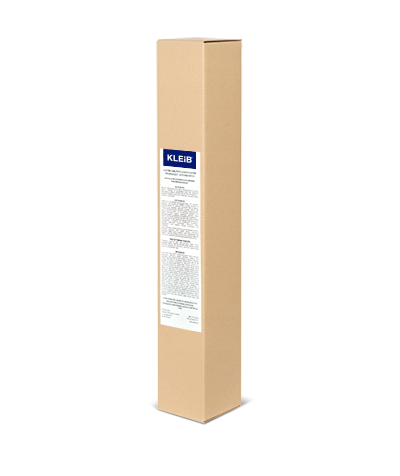SELF-ADHESIVE GUIDE AND SPACING STRIP SYSTEM
CAMAVO CLS is a resilient, self-adhesive PVC guide with trapezoidal cross- section. To be used when applying products to substrates to achieve the desired thickness or precise carvings in the material. This product is an element of CAMAVO LINE SYSTEM solutions. Facilitates the process of constructing vertical and horizontal expansion joints for filling.
- resilient
- adapts to the substrate
- good adhesion to smooth and porous working surfaces
- leaves no adhesive residues
- adequate compressive strength
- versatile
- can be used with mineral, dispersion and bituminous products
- non-absorbent
- easy to use
- self-adhesive
INSTRUCTIONAL VIDEO:

CAMAVO CLS is a flexible self-adhesive PVC moulding with a trapezoidal cross-section. It is used when applying products to substrates to the desired thickness, or achieving precise grooves in the material. This product is part of the CAMAVO LINE SYSTEM. It allows the material to be applied precisely as required, either according to the curvature of the substrate or after backing with other system mouldings to achieve a straight surface. Obtaining vertical and horizontal expansion joints to be filled.
Surfaces must be clean and free of loose particles. Prepare substrates in accordance with the manufacturer's guidelines for the material in question. Any priming required with specific products should be carried out prior to gluing the mouldings. For technical reasons, the mouldings may show limited adhesion to silicone-based or siloxane-additives soils.
The thickness of the strip should be chosen in such a way that the expected allowable thickness of a particular material at a time can be applied. Before gluing, the bonding points should be outlined on the surface. Select the width of the moulding spacing according to your tool (trowel, batten) so that a minimum of 2 mouldings can be guided at the same time. The slats should be glued by removing the covering paper from the adhesive layer and immediately pressed to the substrate. Bonding should take place no more than 30 minutes before the material is applied. Application of the material should be along the strips.
When applying bituminous, mineral and polymeric waterproofing materials, it is required to remove the moulding immediately after the application of the material and to fill in the space left by the moulding still within the time indicated in the technical data sheet as the treatment time for the material.
Most mineral materials such as putties, adhesives and plasters also allow the strip to be removed after setting. However, in this case, even after filling in the space left by the moulding, visible traces of the material joining must be expected. When using imprinting dies on mouldings after imprinting, the moulding should be separated from the material with a wallpaper knife, for example, before it has even set.
If it is necessary to level out unevenness in the substrate, it is possible to underlay the strip with strip fragments of a smaller size than the one to be glued (e.g. the glued strip is CAMAVO CLS5/10, the underlay is made of CAMAVO CLS2/9 strip). The strip to be glued should have an upper width equal to the adhesive layer of the target strip.
STRIPS MUST BE REMOVED AFTER COMPLETION OF THE WORK!
The strips are not recommended for use on gypsum substrates and plasterboard without testing. Work should be carried out in dry conditions with air and substrate temperatures between -20 and +40˚C. All data refers to a temperature of +23˚C and a relative humidity of 50%. Under other conditions, material parameters may change. The manufacturer of the material to which the mouldings are to be applied should always be consulted for their application. Adhesion tests should be carried out before the actual application, together with a check that the moulding can be removed from the material. The elasticity of the slats decreases with increasing thickness. When used on curved surfaces, it is necessary to test the adhesive strength and relative additional mechanical fixing to the substrate (e.g. with screws and wall plugs).
This technical sheet defines the scope of application of the material and the recommended method of carrying out the work, but cannot replace the professional preparation of the contractor. In addition to the given recommendations, work should be carried out in accordance with the construction practice and health and safety rules. The manufacturer guarantees the quality of the product, but has no influence on the conditions and method of use. If in doubt, perform your own application tests. With the publication of this data sheet, previous data sheets are no longer valid.
